Ecstatic parades, castrated priests. Holy sex under the pyramids and ritual murder. Sounds like a bad horror story? This is how gods and goddesses were once worshiped. After all, any god can demand any sacrifice ...
As always, all positions in the TOP10 ranking are based on the articles we publish. This time, we have selected 10 texts that depict the barbaric, brutal and unusual aspects of some religions and beliefs.
9. Orgy in the name of God
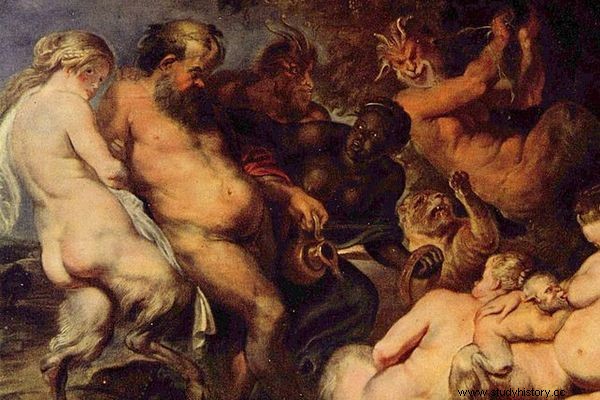
Bacchanalia, or rituals in honor of Bacchus (Dionysus), began in Great Greece, from where they got to Rome, transforming into dissolute orgies. The illustration shows a fragment of Rubens' painting "Bacchanalia".
Bacchanalia were ancient ceremonies in honor of the god Bacchus. Originally from Greece, they were an occasion for the despised "weak sex" to scream. The women then imitated the mythical nymphs from Bacchus' retinue, and went down in history as menady, bacchantes.
The Romans have already gone one step further. The worship of Bacchus spread very quickly, and both women and men participated in the mysteries. The merry bacchanalia turned into orgies which, due to their size and social overtone, interested the imperial court itself (read more on this topic).
8. Worship only for neuters

Castration as a way to salvation? There were those who believed it
Cybele - the Phrygian goddess, protector of the earth, spring and fertility, required a lot of sacrifice from her followers. Joining this religious group forced future priests to get rid of their testicles. During the ceremony in honor of the goddess, the candidates for priests performed an ecstatic dance in a rush of rhythmic and loud music, probably combined with a large dose of intoxicants. When the wave of religious frenzy reached its zenith, they self-mutilated, and the testicles lying on the ground fertilized the soil with blood. It was not the only cult elevating castrati, but it is certainly the most famous (read more about it).
7. The neighbor as a sacrificial pig
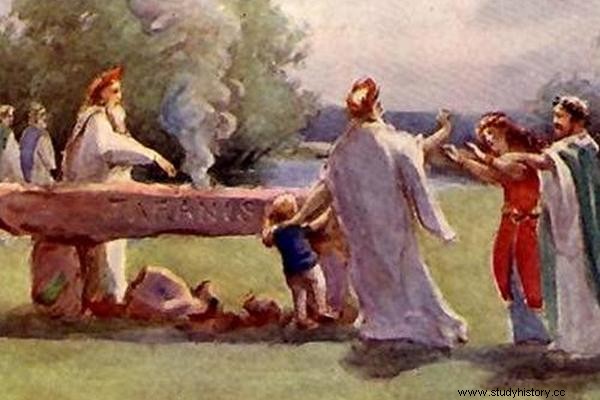
19th-century drawing of druids sacrificing a child.
Murdering people during religious ceremonies was daily bread for the ancient peoples of Europe and the Mediterranean. Because how else to appease the gods than by shedding some human blood? This was the assumption made by the Celts. Some tribes built enormous puppets that were filled with living people, and then set on fire to the delight of the gods. At least that's what the not-so-impartial Julius Caesar claimed (read more about it).
6. The gods of Mesoamerica bleed the most

According to the Aztecs, the blood of their victims was to provide food for the Sun, which it needed to move through the sky.
The stripped and bound prisoner were thrown into the fire, where he roasted alive for a while. This was the rite of sacrifice in honor of the Aztec god of fire Xihuatecuhtli. And he was not the only bloodthirsty deity. Xipe Totec - the god of spring required a sacrifice from a prisoner who had distinguished himself with bravery on the battlefield. These two are just the iceberg of the Aztec carnage that terrified the conquistadors (read more on that).
5. Cannibalism with prayerful respect

A feast of the cannibals from the island of Tanna. Image by Charles E. Gordon Frazer.
The phenomenon of cannibalism is very deep in the human psyche and culture. We find its manifestations in myths, legends, and even in fairy tales for children. In some cultures, cannibalism was socially acceptable. For New Zealand Maori or Australian Wonkonguru Aborigines, eating the body was an expression of the highest respect for the deceased (read more on this topic).
4. The holy harems of Egypt

Egyptian priestess worshiping the cat-god in a 19th-century painting. Probably in the meantime giving his body to pilgrims looking for fun…
The ancient Egyptians did not know the concept of shame as it is today. No wonder that in a society of such customs, prostitution flourished like nowhere else. And it was guarded by… religion. For example, temple harems functioned in ancient Egypt. They were organized at the tabernacles of Isis, the goddess of fertility, and Amon, the god of fertility. A pilgrim going to such a temple could kill two birds on one spit:use the sexual services of a "priestess" and at the same time worship a god. And it's free (read more about it).
3. Holy porn under the pyramids
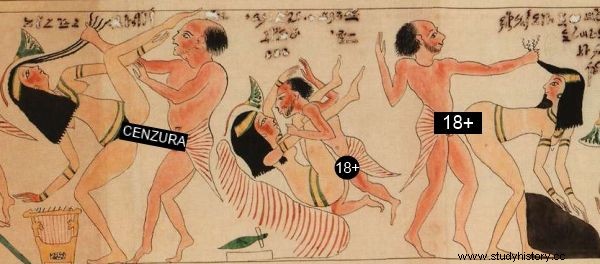
The free attitude of the Egyptians (and their gods) to sex is perfectly demonstrated by the so-called "Erotic Papyrus" from Turin.
The ancient Egyptians were extremely casual about sex. But let's not be fooled! The Greek and Roman gods were also loosing. Meanwhile, their Egyptian cousins considered themselves made for higher purposes in these matters. They indulged in acts of love not for pleasure but for purely utilitarian purposes to create, beget or humiliate an adversary (read more on this topic).
2. Child sacrifice or black propaganda
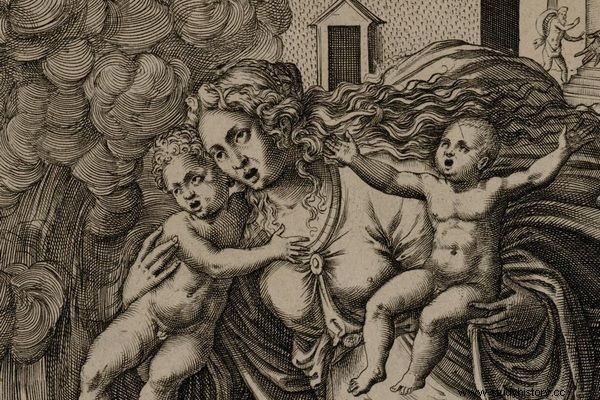
Are the mentions of Carthaginian child sacrifices merely rumors spread by hostile Greek and Roman historians?
“Such victims have saved Carthage before. Perhaps a suitable gift would satisfy Baal Hammon? " Such statements still linger in the historical literature. And they concern the alleged child sacrifice by the inhabitants of ancient Carthage. One of the Carthaginian deities was the fertility goddess - Tanit. It was her husband, Baal Hammon, the deity of vegetation, who were allegedly sacrificed of the youngest, although this issue arouses fierce disputes among historians and archaeologists (read more on this topic).
1. Prussians - Aztecs of Europe?
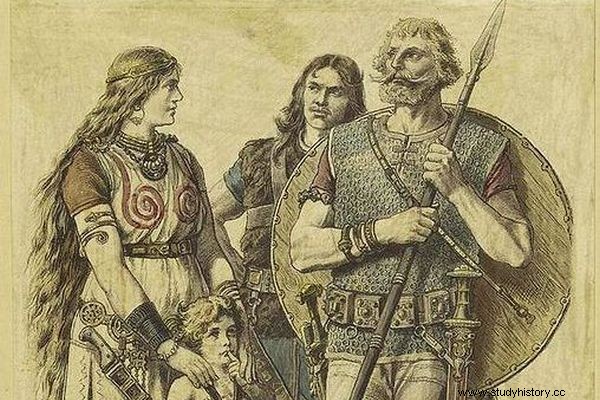
The historical image of the Prusai is still a collection of facts and myths, accounts and manipulations. Were they simple pagan people or aggressive barbarians?
Many old authors wrote about the bloody practices of the pagan Prusai. One of the last non-Christianized groups of medieval Europe, it fired the imaginations of contemporary writers. The Prussians were to gut their enemies, pierced them with spars and sacrificed. When they managed to win a battle or a war, they sacrificed the leaders of the defeated armies to their gods. If there was no such prisoner among the prisoners (because he died or escaped), the unfortunate man was randomly selected. Much of this bloodbath, however, was forced by successive foreign raids (read more on this).
